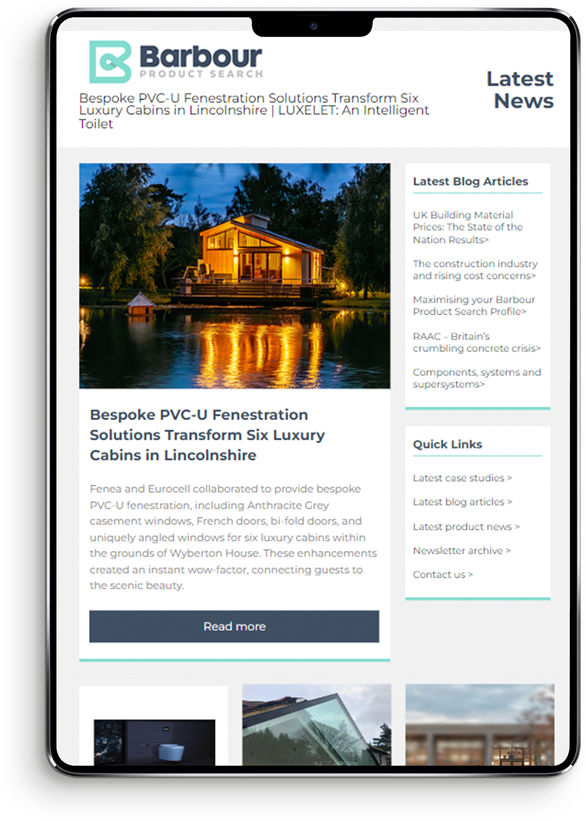Steve McCarthy, Managing Director at McCarthys, emphasises the importance of designing workspaces that accommodate the needs of neurodivergent individuals.
Around 1 in 7 people in the UK are neurodivergent, according to estimates. That’s more than 15% of the population whose brain functions and processes information differently to the way society expects. So when creating spaces, design that considers experiences of neurodiverse individuals is essential for fostering a truly inclusive workplace environment. We hear from Steve McCarthy, Managing Director, at McCarthys.
Agile workspaces
When it comes to the spaces that individuals work best in, we’re all different. Some people seek collaborative environments, while others prefer quiet, private spaces to focus or reset. What’s more, these needs may fluctuate from day-to-day or hour-to-hour.
In order to accommodate these differing requirements, workspaces should present a variety of options. Whether it’s open plan offices, hot-desking zones or dedicated quiet rooms, agile work settings can help to get the best out of teams by empowering individuals to choose an environment that best supports them and their working style. In terms of furniture, you might also want to consider adjustable-height or standing desks to allow employees to work comfortably regardless of their needs or preferences.
Breakout areas in particular allow those that wish/need to to step away from the hustle and bustle of the office to work, or take a break in a quieter, low-stimulation setting. These areas offer neurodiverse individuals the opportunity to avoid sensory overload and can be extremely beneficial for mental wellbeing and productivity.
The role of colour and lighting
Colour in our surroundings can have a significant impact too. Light colours can make spaces feel more open and spacious, while darker shades may create more intimacy and cosiness. Beyond this — colours are more than just visual stimuli, they can influence the way we feel, behave and operate.
Cool hues like blues and greens are said to promote calmness and reduce anxiety, so are great for spaces where occupants need to focus or concentrate without feeling overwhelmed. Whereas warmer colours, such as reds, oranges and yellows, can boost energy and increase serotonin. Subsequently, these tones are often used where social interaction and collaboration are encouraged.
McCarthys worked on one project where a specific studio was defined by the colour orange. This was designed with both warm and cool shades of orange to ensure the energised feel didn’t cause overstimulation.
Along with colour, the textures and finishes used in a space can play a significant role in the experience of neurodiverse individuals. Those with sensory sensitivities may find certain materials either soothing or overwhelming.
Lighting is another powerful tool in design, and is especially important when considering neurodiversity. Bright or harsh lighting may be overwhelming, while dim lighting could lead to a lack of focus or energy. For this reason, McCarthys has previously opted for smart wireless lighting systems, enabling a high degree of flexibility by allowing people to adjust light levels, change colours, and create mood-appropriate lighting using simple mobile technology.
Beyond neurodiversity
On a broader level, inclusivity extends much further. Features such as ramps and accessible platform lifts are key to enabling everyone, regardless of mobility, to navigate the space comfortably for example. Plus, all doors, openings and corridors should comply with the Disability Discrimination Act (DDA).
Visual accessibility is another essential factor. So colour-coded or contrasted shades doors, frames and openings can be implemented to help those with visual impairments to navigate the space with ease. Textured surfaces could also be used to draw attention to potential obstacles and changes in elevation.
The inclusion of gender-neutral toilets is also something to consider when it comes to a commitment to inclusivity. Likewise is the inclusion of religious spaces to ensure that individuals of different faiths can perform their rituals in a private and respectful space. In one office, McCarthys implemented a Wudu room to serve the needs of the workforce, for example.
Closing thoughts
Achieving true inclusion is no mean feat but when it comes to designing spaces, it starts with understanding how different people interact with their environments. However, by considering elements such as layout, colour, and lighting, designers can create functional spaces that more effectively serve the needs of neurodiverse employees. In doing so, a workplace becomes more welcoming, adaptable and supportive for everyone.
Learn more
Workplace neurodiversity: creating inclusive spaces
| T | (0)121 707 0077 |
|---|---|
| E | info@thefis.org |
| W | Visit Finishes & Interiors Sector's website |
| Visit SpecFinish Magazine | |
| FIS, Olton Bridge, 245 Warwick Road, Solihull, West Midlands, B92 7AH |


